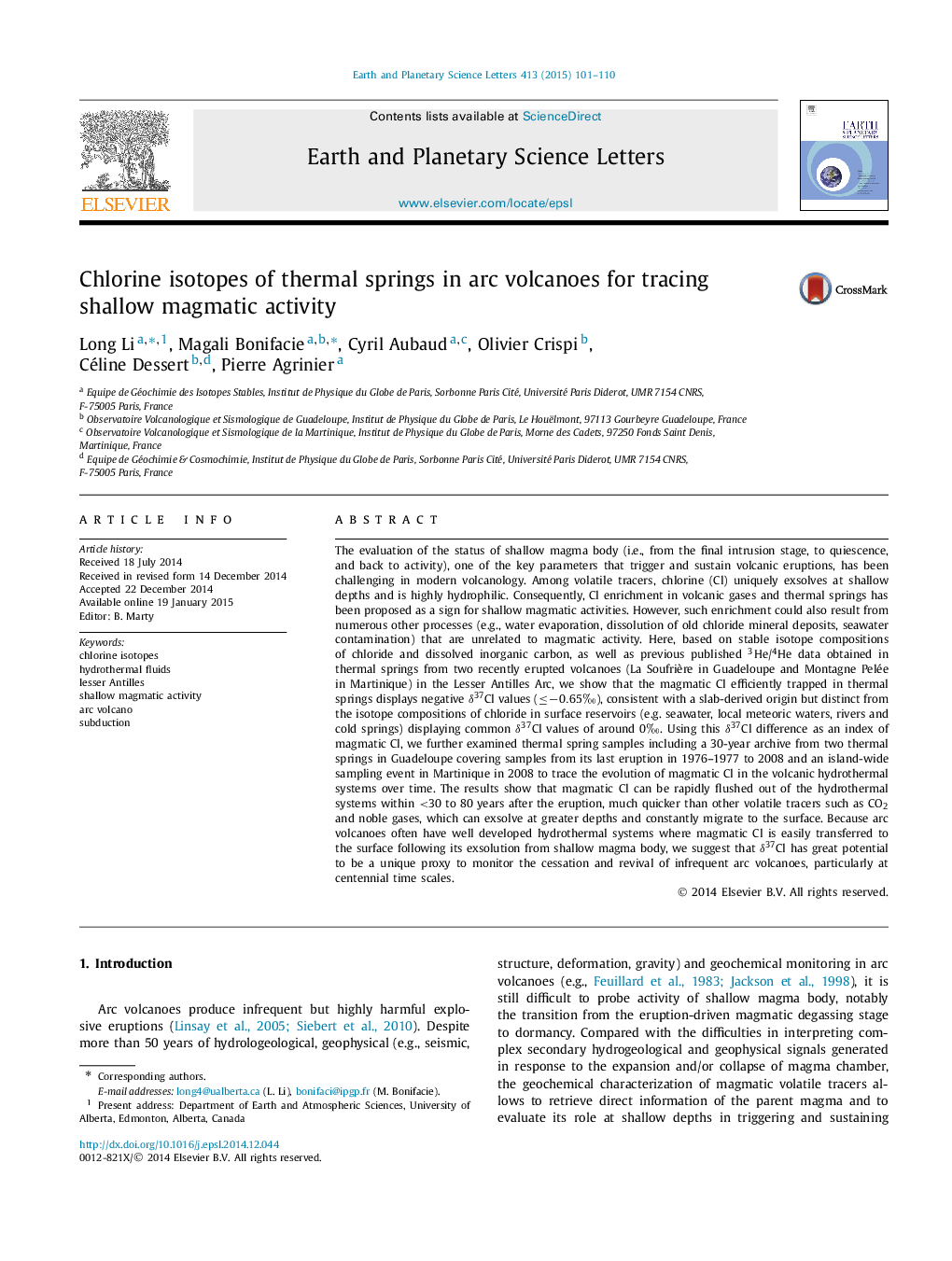| کد مقاله | کد نشریه | سال انتشار | مقاله انگلیسی | نسخه تمام متن |
|---|---|---|---|---|
| 6428598 | 1634743 | 2015 | 10 صفحه PDF | دانلود رایگان |
- A 30-year Cl isotope evolution of chloride in volcanic thermal springs.
- Magmatic Cl in thermal springs is more 37Cl-depleted than surface waters.
- δ37Cl reveals that residence time of magmatic Cl in thermal springs is <30-80 years.
- δ37Cl of thermal springs can be a robust proxy to probe shallow magmatic activity.
The evaluation of the status of shallow magma body (i.e., from the final intrusion stage, to quiescence, and back to activity), one of the key parameters that trigger and sustain volcanic eruptions, has been challenging in modern volcanology. Among volatile tracers, chlorine (Cl) uniquely exsolves at shallow depths and is highly hydrophilic. Consequently, Cl enrichment in volcanic gases and thermal springs has been proposed as a sign for shallow magmatic activities. However, such enrichment could also result from numerous other processes (e.g., water evaporation, dissolution of old chloride mineral deposits, seawater contamination) that are unrelated to magmatic activity. Here, based on stable isotope compositions of chloride and dissolved inorganic carbon, as well as previous published 3He/4He data obtained in thermal springs from two recently erupted volcanoes (La Soufrière in Guadeloupe and Montagne Pelée in Martinique) in the Lesser Antilles Arc, we show that the magmatic Cl efficiently trapped in thermal springs displays negative δ37Cl values (â¤â0.65â°), consistent with a slab-derived origin but distinct from the isotope compositions of chloride in surface reservoirs (e.g. seawater, local meteoric waters, rivers and cold springs) displaying common δ37Cl values of around 0â°. Using this δ37Cl difference as an index of magmatic Cl, we further examined thermal spring samples including a 30-year archive from two thermal springs in Guadeloupe covering samples from its last eruption in 1976-1977 to 2008 and an island-wide sampling event in Martinique in 2008 to trace the evolution of magmatic Cl in the volcanic hydrothermal systems over time. The results show that magmatic Cl can be rapidly flushed out of the hydrothermal systems within <30 to 80 years after the eruption, much quicker than other volatile tracers such as CO2 and noble gases, which can exsolve at greater depths and constantly migrate to the surface. Because arc volcanoes often have well developed hydrothermal systems where magmatic Cl is easily transferred to the surface following its exsolution from shallow magma body, we suggest that δ37Cl has great potential to be a unique proxy to monitor the cessation and revival of infrequent arc volcanoes, particularly at centennial time scales.
Journal: Earth and Planetary Science Letters - Volume 413, 1 March 2015, Pages 101-110
